| Home | Mirror Blanks&Material | My Telescopes | Mirror Making | Deep Sky |
| Deutsch (de)![]()
| Home | Mirror Blanks&Material | My Telescopes | Mirror Making | Deep Sky |
IRIS 0,80 m robotic Telescope
Installation at the Observatorio Cerro Murphy, Atacama, Chile
Copyright © from Stathis Kafalis
IRIS is a special telescope for infrared imaging (wavelength of 1,2 bis 2,2 μm) with a mirror of 80 cm diameter and is dedicated to exploration of very young stars and their circumstellar discs. The observatory was operated by the University of Bochum in Germany and the Instituto de Astronomía de la Universidád Católica del Norte (UCN). It was located at the 2.800 m high "Cerro Murphy" a side summit of Cerro Armazones, where currently the European Extremely Large Telescope (E-ELT) is being build.
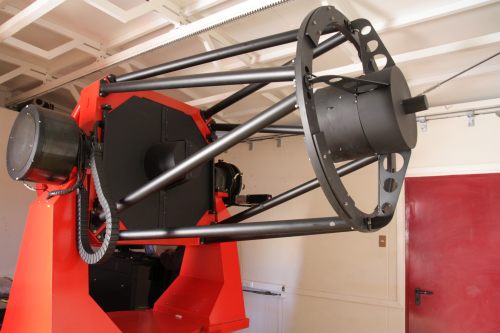 Click on the images to expand |
We installed the telescope and its housing in March 2010. It is a modified Cassegrain with Nasmyth focus, derotator and corrector on an Alt/Az- fork mount with direct driven motors
More pictures from the telescope: |
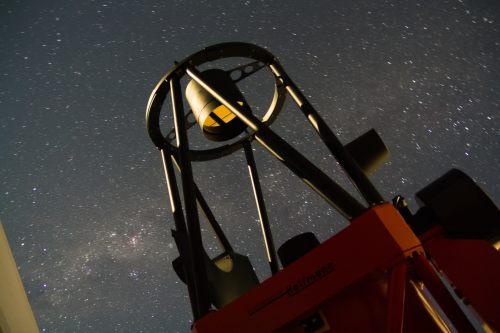 |
IRIS at moonlight and the milky way with the Eta- Carina Complex. |
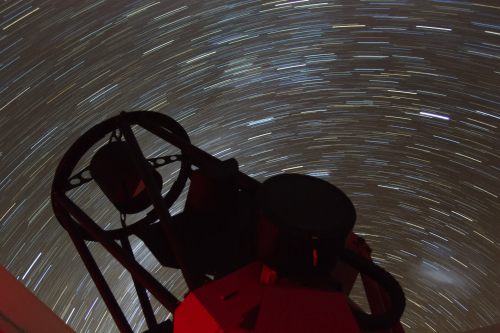 |
All photos were taken with a Canon 450D and mostly a Tamron 17-50 mm 2,8 XR Di II lens. Here at 21 mm focal length at f/2.8. Stack of 5 x 4 min at 400 ASA. At lower right is the Large Magellanic Cloud |
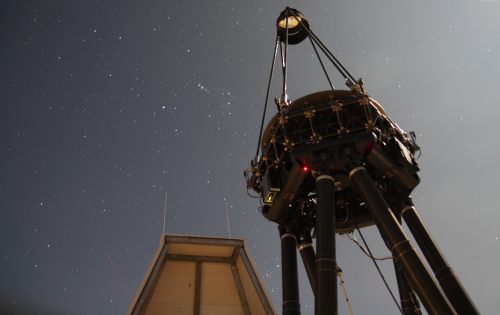 |
Next to some smaller instruments the university of Bochum operated the 1,5 m hexapod telescope in a trapezium shaped roll off housing. A unique starlight collecting machine whose mount consisted of 6 legs of adjustable length which allowed, to point down to 30° above the horizon.
The picture was taken at bright moonlight at 17 mm f/2,8 and 30 s exposure time at 200 ASA |
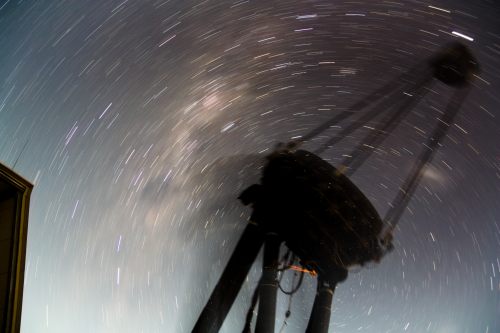 |
The hexapod telescope during tracking in front of the milky way with Eta Carina, the Coal Sack and the Large Magellanic Cloud. Lens at 17 mm f/2,8. Single shot of 17 min exposure time at 200 ASA. Bright moonlight illuminated the scene. |
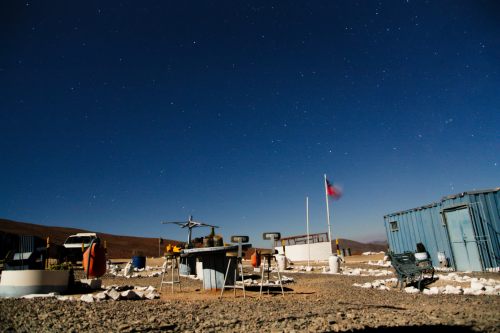 |
The "Residencia" at the foot of Cerro Murphy. We slept in sleeping bags in construction containers, ate in the kitchen container, what was carried once a week from Antofagasta, the water for shower came from the tank and got warm not before afternoon
Picture exposed 10 seconds at bright moonlight |
 |
This apparently carelessly parked trailer behind the containers wrote history: Searching for the best astronomical place on earth Peter Aniol brought in the 1990-ties his 80 cm Newtonian with this very vehicle to this extremly remote site. Later the telescope was put in to this housing and was used by the students of UCN. |
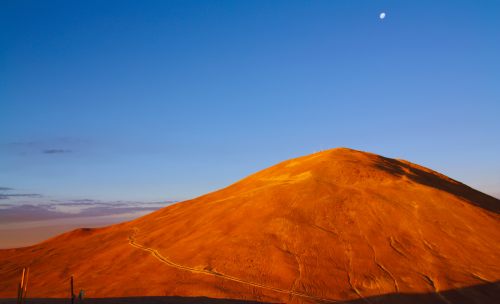 |
The 3,000 m high Cerro Armazones stays in the middle of the Atacama, the driest desert on earth. I was lucky to experience this spectacular landscape before the dynamite blasts begun and the excavators and big trucks took over, to build the largest telescope on this palnet at the best place of this planet |
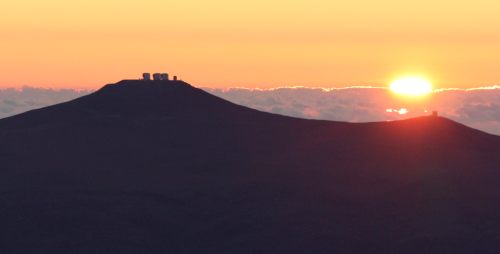 |
View Cerro Paranal 20 km nearby with the VLT |
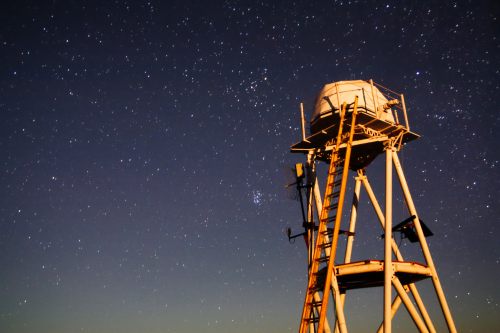 |
On top of Cerro Armazones it is windy, dusty and extremely dry. Whatever they will build here, it has to withstand the wind, which is at 39 meter diameter no easy task! The moonlit seeing monitor from Astelco / Halfmann had to pose in front of the Hyades and Pleiades.
With no exaggeration one can say, that what you see from here with the unaded eye and a 10x50 binocular is nothing less than "Astronomers Paradise". A spectacular view accross the wide desert and above that a wide sky with a wildly rugged southern milky way full of knots, star clusters and dark clouds. Towards the NNE I could see a 2 finger high faint glow from Antofagasta 110 km away. Except of that from horizon to horizon the pure universe. |
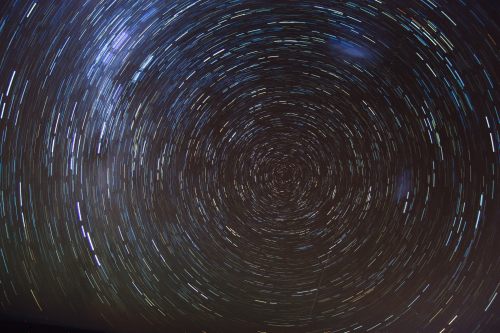 |
South pole sequence with the mily way and the Magellanic Clouds
Canon 450 D with Tamron 17-50 mm 2,8 XR Di II at 17 mm f/2,8. Stack of 9 x 4 min at 400 ASA |
^ Top
Home | Imprint | Privacy Policy | about |